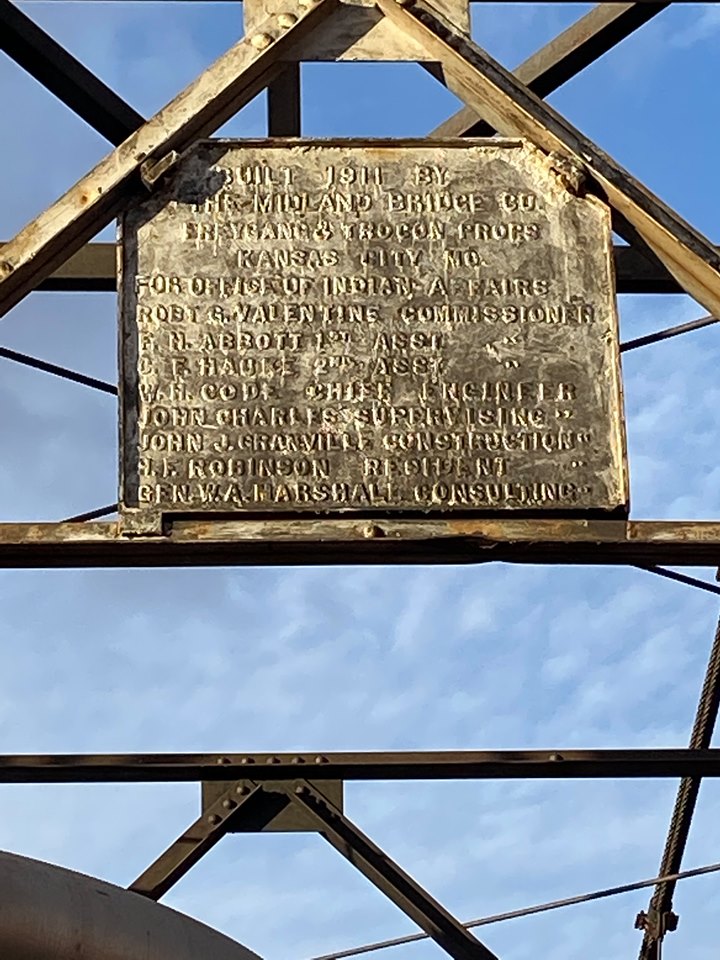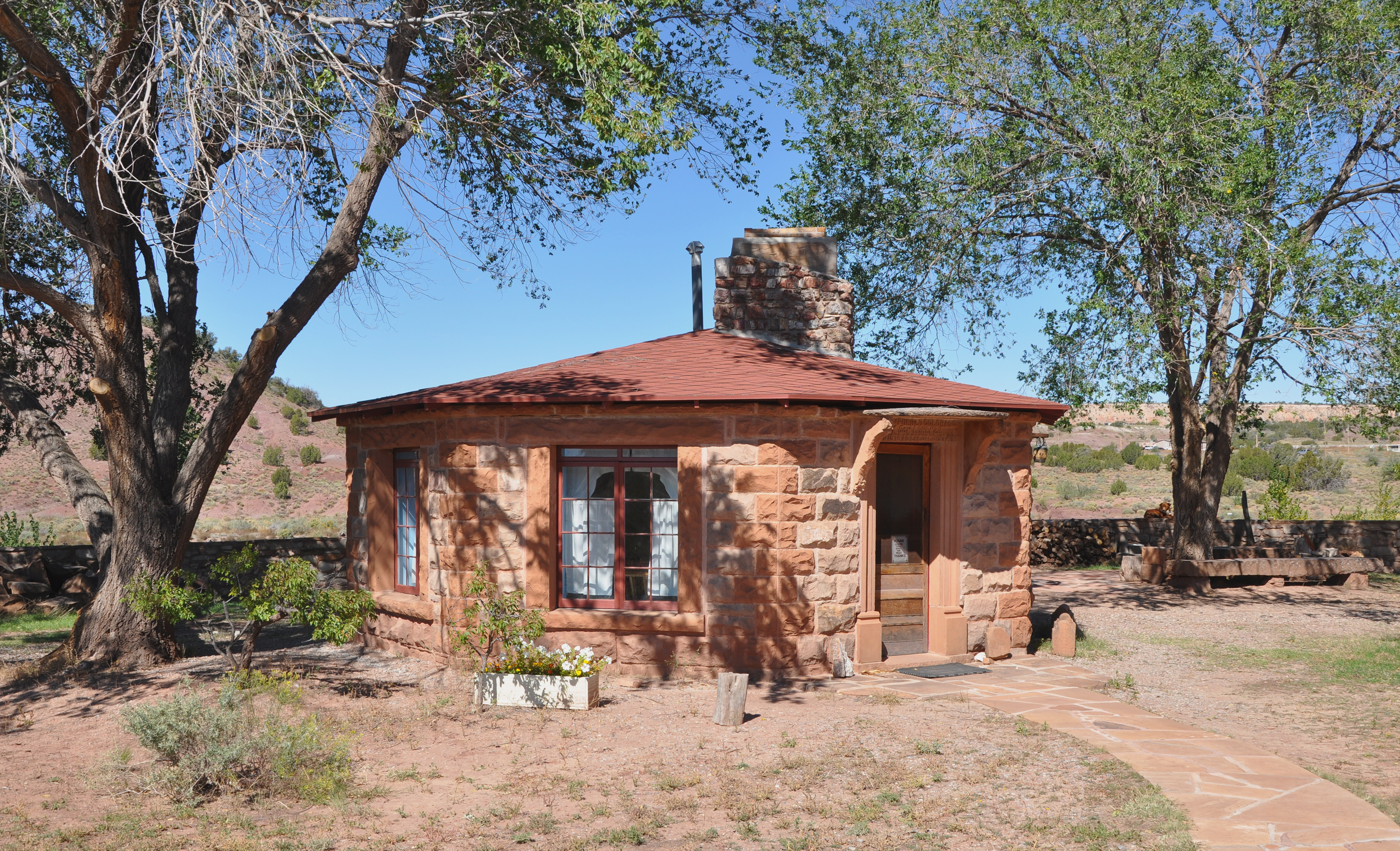|
A Thief Of Time
''A Thief of Time'' is the eighth crime fiction novel Joe Leaphorn / Jim Chee Navajo Tribal Police series by Tony Hillerman, first published in 1988. It was adapted for television as part of the PBS ''Mystery!'' series in 2004. The story involves the lure of the thousand-year-old Anasazi ruins, a missing anthropologist, a stolen backhoe, people who steal ancient pots on reservation land and human ambition. Chee is pulled into the case by the stolen backhoe, while Leaphorn, now a widower, follows the trail of ancient pots bought and sold. This novel won the Macavity Award for Best Novel in 1989 and was nominated for two others: The Edgar Award and the Anthony Award. Hillerman has set expectations high, as this novel is an award-winner, yet "Slightly less absorbing than the best Hillermans, but darkly atmospheric and ultimately powerful--with (as usual) effective contrasts among the theological beliefs of rationalist Leaphorn, mystical Chee, and other Navajos." is the comment o ... [...More Info...] [...Related Items...] OR: [Wikipedia] [Google] [Baidu] |
Tony Hillerman
Anthony Grove Hillerman (May 27, 1925 – October 26, 2008) was an American author of detective novels and nonfiction works, best known for his mystery novels featuring Navajo Nation Police officers Joe Leaphorn and Jim Chee. Several of his works have been adapted as theatrical and television movies. Biography Tony Hillerman was born in Sacred Heart, Oklahoma, to August Alfred Hillerman, a farmer and shopkeeper, and his wife, Lucy Grove. He was the youngest of their three children, and the second son. His paternal grandparents were born in Germany, and his maternal grandparents were born in England. He grew up in Pottawatomie County, Oklahoma, attending elementary and high school with Potawatomi children. Jeffrey Herlihy argues that this background made possible "a significantly different portrayal of Native Americans in his writing", in comparison to other authors of his time. "Growing up Indian," Hillerman said of his childhood, "you did not have an 'us and them.'" He was a ... [...More Info...] [...Related Items...] OR: [Wikipedia] [Google] [Baidu] |
Cameron, Arizona
Cameron ( nv, ) is a census-designated place (CDP) in Coconino County, Arizona, United States, on the Navajo Nation. The population was 885 at the 2010 census. Most of the town's economy is tourist food and craft stalls, restaurants, and other services for north–south traffic from Flagstaff and Page. There is a ranger station supplying information and hiking permits for the Navajo Nation as well as a small selection of books for sale. There is also a large craft store run by the Nation itself; most vendors in the area operate from small private stalls. It is named after Ralph H. Cameron, Arizona's first senator. Geography Cameron is located at (35.855410, -111.421465) on the Navajo Nation. Elevation is above sea level. It is immediately south of the Little Colorado River, just above the beginning of the Little Colorado River Gorge and the stream's descent into the Grand Canyon. Cameron lies at the intersection of US 89 and State Route 64, not far from the Desert View e ... [...More Info...] [...Related Items...] OR: [Wikipedia] [Google] [Baidu] |
Montezuma Creek, Utah
Montezuma Creek is a census-designated place (CDP) in San Juan County, Utah, United States. The population was 335 at the 2010 census, a decrease from the 2000 figure of 507. Education Montezuma Creek also is the center of education of about 500 Navajos in the area. Schools in the area include Montezuma Creek Elementary School and Whitehorse Junior/Senior High School, both a part of the San Juan School District. Whitehorse High is adjacent to the census-designated place, Geography Montezuma Creek is located at the confluence of the stream Montezuma Creek with the San Juan River. The community is served by highways U.S. Route 163 and Utah State Route 262.''Montezuma Creek, UT, 7.5 Minute Topographic Quadrangle, USGS, 1982 According to the United States Census Bureau, the CDP has a total area of 12.5 square miles (32.4 km2), of which 12.1 square miles (31.4 km2) is land and 0.4 square mile (1.1 km2) (3.27%) is water. Demographics As of the ... [...More Info...] [...Related Items...] OR: [Wikipedia] [Google] [Baidu] |
Mexican Hat, Utah
Mexican Hat is a census-designated place (CDP) in Utah in the United States. It is on the San Juan River on the northern edge of the Navajo Nation's borders in south-central San Juan County. The population was 31 in the 2010 census, a sharp decline from the previous two censuses. History The name "Mexican Hat" comes from a curiously sombrero-shaped rock outcropping on the northeast edge of town; the rock measures wide by . The "Hat" has two rock climbing routes ascending it. Mexican Hat has frequently been noted on lists of unusual place names. In 2016, the U.S. Route 163 bridge crossing the San Juan River on the south border of the town was renamed the " Jason R. Workman Memorial Bridge" after a member of SEAL Team Six who was killed in action in Afghanistan on August 6, 2011. Workman was a 1997 graduate of the nearby San Juan High School. Geography The CDP is on U.S. Route 163, just south of the junction with State Route 261, and is just outside the northern boundary ... [...More Info...] [...Related Items...] OR: [Wikipedia] [Google] [Baidu] |
Many Farms, Arizona
Many Farms ( nv, ) is a census-designated place (CDP) in Apache County, Arizona, United States. The population was 1,348 at the 2010 census. Geography Many Farms is located at (36.359870, -109.628053). According to the United States Census Bureau, the CDP has a total area of , of which is land and , or 0.3%, is water. Climate According to the Köppen Climate Classification system, Many Farms has a semi-arid climate, abbreviated "BSk" on climate maps. History Many Farms is an English translation of the Navajo name of the area and is descriptive. The farms became fully irrigated in 1937. From 1952 to 1962, the Many Farms community was the location of two major medical experiments led by Walsh McDermott. The goal of the first experiment was to test the efficacy of the drug isoniazid as a treatment for tuberculosis (TB), which was then widespread and largely fatal among the Navajo despite the availability of TB medication elsewhere in the country. McDermott chose the reser ... [...More Info...] [...Related Items...] OR: [Wikipedia] [Google] [Baidu] |
La Plata Mountains
The La Plata Mountains are a small subrange of the San Juan Mountains in the southwestern part of Colorado, United States. They are located on the border between Montezuma and La Plata counties, about northwest of Durango. Their name is Spanish for ''silver''. The peaks of the range are easily visible from U.S. Route 160, which skirts the range on the south. The La Plata River and the Mancos River have their headwaters in the range. The Colorado Trail accesses even towards the northern peaks. The best-known and highest peak in the La Plata Mountains is Hesperus Mountain, which is the Navajo sacred mountain of the north. The six of the highest summits are listed below. Six highest peaks * Hesperus Mountain, * Lavender Peak, * Mount Moss, * Babcock Peak, * Centennial Peak, 13,062 ft (3,981 m) * Burwell Peak, See also *Mountain ranges of Colorado This is a list of the major mountain ranges in the U.S. State of Colorado. All of these ranges are cons ... [...More Info...] [...Related Items...] OR: [Wikipedia] [Google] [Baidu] |
Kayenta, Arizona
Kayenta ( nv, ) is a U.S. town which is part of the Navajo Nation and is in Navajo County, Arizona, United States. Established November 13, 1986, the Kayenta Township is the only "township" existing under the laws of the Navajo Nation, making it unique in this way. The population was 5,189 at the 2010 census. Kayenta is located south of Monument Valley and contains a number of hotels and motels which serve visitors to Monument Valley. Like other places on the Navajo Nation, it is illegal to serve alcohol. Arizona does not observe Daylight Time; however, the Navajo reservation does. Kayenta Township is the only municipal-style government on the Navajo Nation. It is regarded as a political sub-division of the Navajo Nation. It is managed by a five-member elected town board, which hires the township manager. Kayenta is the name for the Chapter, as well as the township. Kayenta Chapter (a political division within the Navajo Nation that is analogous to a county within a state) en ... [...More Info...] [...Related Items...] OR: [Wikipedia] [Google] [Baidu] |
Ganado, Arizona
Ganado ( nv, ) is a chapter of the Navajo Nation and census-designated place (CDP) in Apache County, Arizona, United States. The population was 1,210 at the 2010 census. Ganado is part of the Fort Defiance Agency, of the Bureau of Indian Affairs; and is the delegate seat for the district that encompasses the Jeddito, Cornfields, Ganado, Kinlichee, Steamboat communities at the Navajo Nation Council. The Hubbell Trading Post National Historic Site in Ganado is maintained as an example of a 19th-century trading post. Geography Ganado is located at (35.702571, −109.553234). According to the United States Census Bureau, the CDP has a total area of , all land. The greater Ganado area includes Ganado, Burnside, Cornfields, Kinlichee, Wood Springs, Klagetoh, and Steamboat and the family ranches dispersed amongst these sub-areas. Climate According to the Köppen Climate Classification system, Ganado has a semi-arid climate, abbreviated "BSk" on climate maps. Demographics A ... [...More Info...] [...Related Items...] OR: [Wikipedia] [Google] [Baidu] |
Gallup, New Mexico
Zuni: ''Kalabwaki'' , settlement_type = City , nickname = "Indian Capital of the World" , motto = , image_skyline = Gallup, New Mexico.jpg , imagesize = 250px , image_caption = Motels and businesses in Gallup , image_flag = Flag of Gallup, New Mexico.svg , image_seal = , image_map = McKinley_County_New_Mexico_Incorporated_and_Unincorporated_areas_Gallup_Highlighted.svg , mapsize = 250px , map_caption = Location of Gallup in New Mexico , image_map1 = , mapsize1 = , map_caption1 = , pushpin_map = USA , pushpin_map_caption = Location in the United States , subdivision_type = Country , subdivision_type1 = State , subdivision_type2 = County , subdivision_name = United States , subdivision_name1 = New Mexico , subdivision_name2 = McKinley , governmen ... [...More Info...] [...Related Items...] OR: [Wikipedia] [Google] [Baidu] |
Farmington, New Mexico
Farmington is a city in San Juan County in the U.S. state of New Mexico. As of the 2020 census the city had a total population of 46,624 people. Farmington (and surrounding San Juan County) makes up one of the four Metropolitan Statistical Areas (MSAs) in New Mexico. Farmington is located at the junction of the San Juan River, the Animas River, and the La Plata River, and is located on the Colorado Plateau. Farmington is the largest city of San Juan County, one of the geographically largest counties in the United States covering . Farmington serves as the commercial hub for most of northwestern New Mexico and the Four Corners region of four states. Farmington lies at or near the junction of several important highways: U.S. Highway 64, New Mexico Highway 170, New Mexico Highway 371, and New Mexico Highway 516. It is on the Trails of the Ancients Byway, one of the designated New Mexico Scenic Byways. [...More Info...] [...Related Items...] OR: [Wikipedia] [Google] [Baidu] |
Durango, Colorado
Durango is a home rule municipality that is the county seat and the most populous municipality of La Plata County, Colorado, United States. The city population was 19,071 at the 2020 United States Census. Durango is the home of Fort Lewis College. History The town was organized from September 1880 to April 1881 by the Denver and Rio Grande Railroad (D&RG, later known as the Denver and Rio Grande Western railroad) as part of their efforts to reach Silverton, Colorado, and service the San Juan mining district, the goal of their "San Juan Extension" built from Alamosa Colorado. The D&RG chose a site in the Animas Valley close to the Animas River near what's now the Downtown Durango Historic Business District for its railroad facilities following a brief and most likely perfunctory negotiation with the other establishment in the area known as Animas City, two miles to the north. The city was named by ex-Colorado Governor Alexander C. Hunt, a friend of D&RG President William Jacks ... [...More Info...] [...Related Items...] OR: [Wikipedia] [Google] [Baidu] |
Dulce, New Mexico
Dulce ( or ; apj, Lóosi) is a census-designated place (CDP) in Rio Arriba County, New Mexico, United States. The population was 2,743 at the 2010 census, almost entirely Native American. It is the largest community and tribal headquarters of the Jicarilla Apache Reservation. History Dulce was founded by the Gomez family as a ranching operation. The original name was "Agua Dulce," Spanish for sweet water because of the presence of natural springs that provided good drinking water for the people and their animals. The original homestead was founded in 1877 by Jose Eugenio Gomez. The Jicarilla Apache reservation was established in 1887 when the Apache people were forced into a reservation. The Gomez Ranch is currently kept under Manuel Gomez ownership, though surrounded by reservation land. Geography Dulce is located at (36.939557, -106.989600). According to the United States Census Bureau, the CDP has a total area of , of which is land and (0.8%) is water. Demographics ... [...More Info...] [...Related Items...] OR: [Wikipedia] [Google] [Baidu] |






